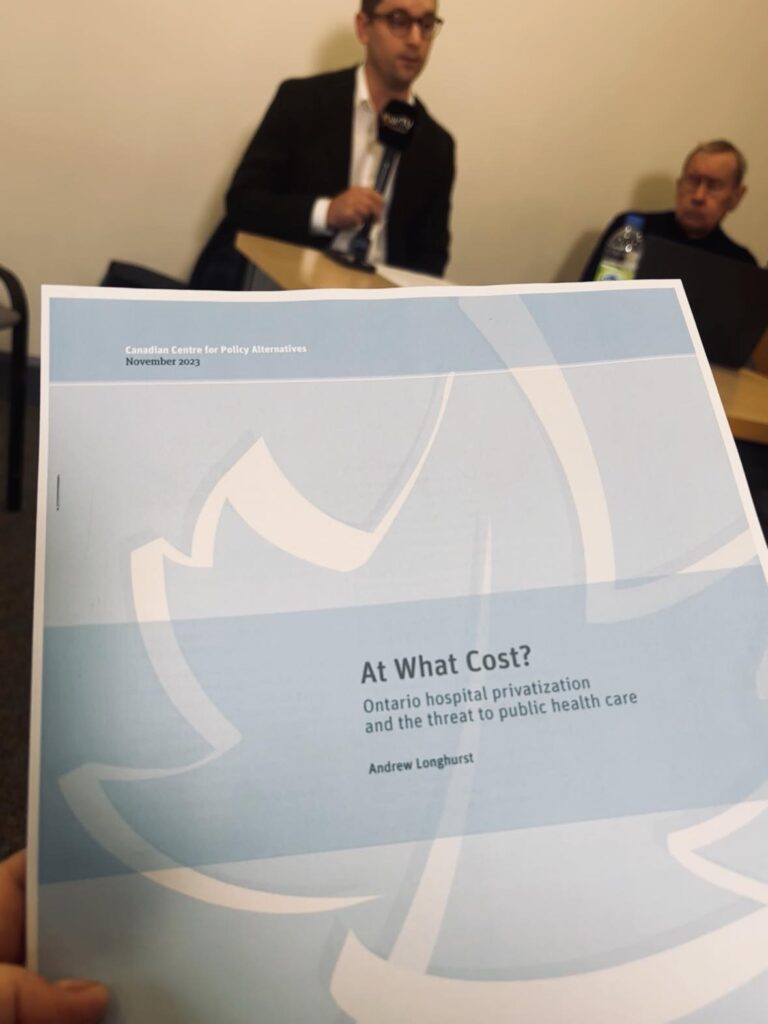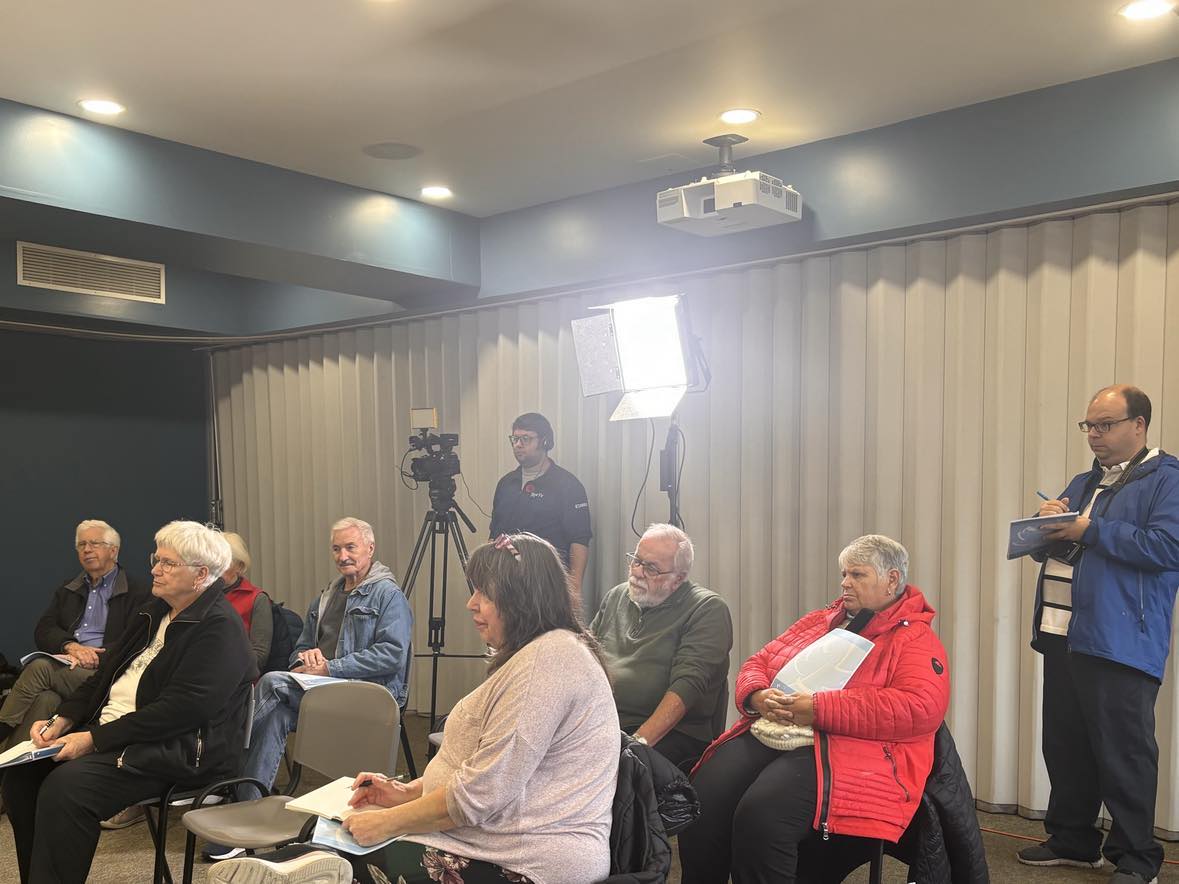The Perils of Privatizing Healthcare: The Case of Ontario’s Bill 60
Today I attended a press conference for a new report from the Canadian Centre for Policy Alternatives called “At What Cost? – Ontario Hospital Privatization and the Threat to Public Health Care” by Andrew Longhurst. The presser was co-hosted by Michael Hurley, President of the Ontario Council of Hospital Unions.

Mr. Longhurst’s report and the press conference today revolved around the threat to Ontario public healthcare through the privatization of Ontario hospital services. Surprisingly readable at 57 pages, I live in hope that the Government of Ontario will read it and re-think its plan to privatize sections of our healthcare.
As you may remember, in May 2023, Ontario passed Bill 60, a law expanding the role of for-profit healthcare facilities in the province. The government claims this will address capacity and wait-time issues in the healthcare system. However, a closer examination of the evidence confirms that these issues will not improve under privatization.

A major consideration if not THE main consideration for the delivery of timely healthcare in Ontario is staff.
Ontario has the physical infrastructure. We have already built it, paid for it and we maintain it. We can leverage that infrastructure to our advantage by opening more operating rooms and running them longer than the current 8-12 hours a day right up to 24 hours a day and on weekends.
We don’t because we lack the staff to run them – Doctors, nurses, technicians etc.
Increasing capacity depends on the availability of qualified medical staff, a factor unchanged by profit-seeking entities. People do not seem to grasp the obvious: privatization doesn’t increase the workforce. Less workforce = less capacity.
As pathetic as they seem to be, with ER closures and creeping hallway medicine, Ontario’s public healthcare system performs well by Canadian standards. The province consistently achieves the best wait-time performance for priority procedures. This indicates the public system’s effectiveness. Saskatchewan, an early adopter of for-profit medicine, is not doing as well.
Examining the existing for-profit healthcare landscape in Ontario reveals crucial insights.
In 2021-22, 98.7% of surgeries still took place in public hospitals.
Private healthcare increases staffing shortages, destabilizing public hospitals, and worsening the problem.
Expanding for-profit healthcare creates a two-tier system, which in the recent past has led to unlawful extra-billing, contrary to healthcare laws and acts.
Take a look at Telehealth providers for example. Ford recently promised that we would always use our OHIP cards to pay for OHIP-covered services. Never, ever would we have to pay with our credit cards. But I recently got a sales pitch from Maple Health.

Call me crazy but it looks to me like they want to charge me $959.88 a year for a subscription to get OHIP-covered services delivered by a private telehealth company. But I digress…
For-profit facilities introduce financial conflicts of interest in medical decisions, potentially leading to unnecessary testing and upselling services. *Upselling can include things like longer hospital stays (that you pay for), extra testing (that you pay for) or laser-assisted cataract surgery (that you pay for) versus traditional cataract surgery etc.
Privatization can jeopardize patient safety and care quality, as profit motives can affect “medical priorities”. An example is private clinics that skimp on staff to reduce their costs resulting in poorer patient outcomes.
For-profit healthcare tends to cost more, straining budgets further. In April 2023, government data revealed that Quebec paid up to 2.5 times more for procedures performed in for-profit procedures. The result is that, directly or through taxes, we pay more for less.
The conclusion of the report indicates that for-profit healthcare in Ontario, as proposed in Bill 60, is not the best solution to current healthcare challenges. Evidence suggests that increasing funding for idle operating rooms in public hospitals is a more promising approach to reducing wait times. Instead of undermining the public system, Ontario should focus on evidence-based strategies to enhance surgical and diagnostic volumes in hospitals, ensuring quality and accessibility for all residents. Many additional strategies are outlined in this excellent report.
The report can be downloaded here: https://policyalternatives.ca/publications/reports/at-what-cost
If you are concerned about the move to further privatization of our healthcare system, please take action! Write to your MPP, write to the Premier, call their offices and send a clear message urging them to reconsider their position. We, after all, are the people they represent and should listen to.
| Nolan Quinn’s Office | Doug Ford’s Office |
| 120 Second St W, Cornwall, ON K6J 1G5 [email protected] 613-933-6513 | Premier of Ontario Legislative Building Queen’s Park Toronto ON M7A 1A1 [email protected] 416-325-1941 |





